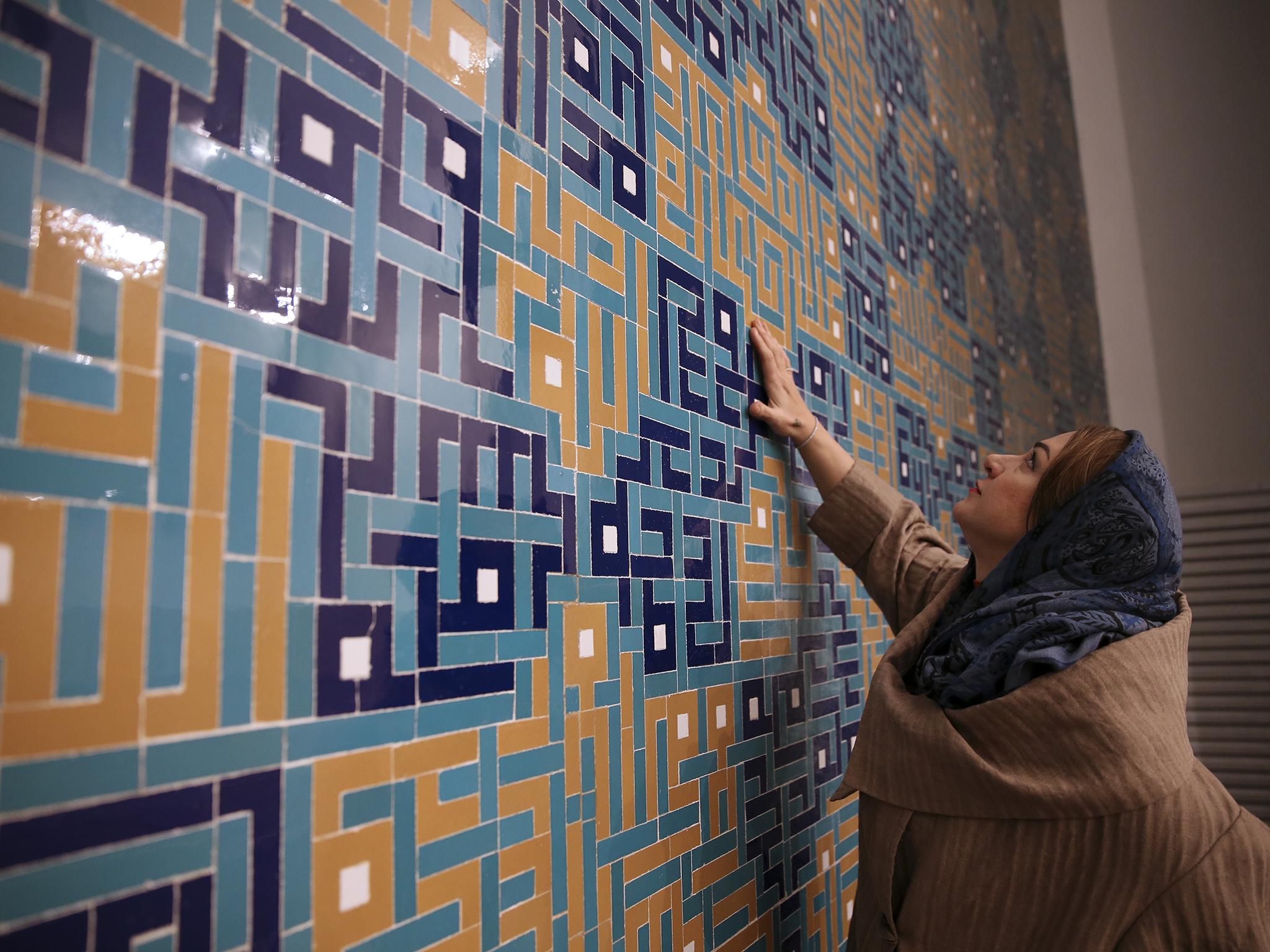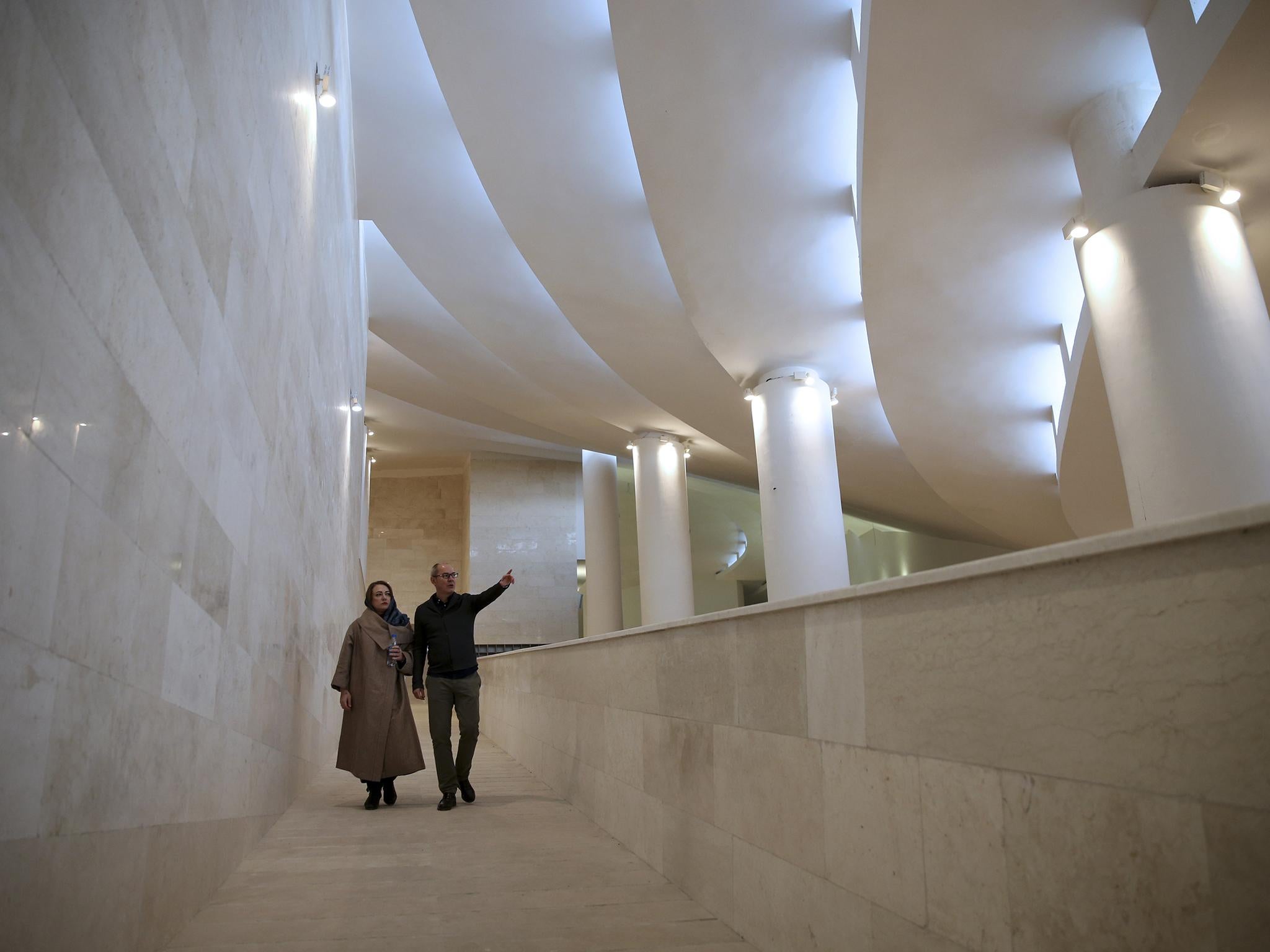Avant-garde mosque in Iran infuriates religious hardliners
'It’s no big deal if it does not follow the stereotypical architecture of mosques that have domes or minarets. It is a place of worship'

Your support helps us to tell the story
From reproductive rights to climate change to Big Tech, The Independent is on the ground when the story is developing. Whether it's investigating the financials of Elon Musk's pro-Trump PAC or producing our latest documentary, 'The A Word', which shines a light on the American women fighting for reproductive rights, we know how important it is to parse out the facts from the messaging.
At such a critical moment in US history, we need reporters on the ground. Your donation allows us to keep sending journalists to speak to both sides of the story.
The Independent is trusted by Americans across the entire political spectrum. And unlike many other quality news outlets, we choose not to lock Americans out of our reporting and analysis with paywalls. We believe quality journalism should be available to everyone, paid for by those who can afford it.
Your support makes all the difference.A newly built avant-garde mosque in the heart of Iran’s capital would have hardliners shouting from the minarets – if there were any.
The architects behind the Vali-e-Asr mosque dispensed with the traditional rounded domes and towering minarets, opting instead for a modern design of undulating waves of grey stone and concrete, which they say complements the surrounding architecture and evokes the austerity of early Islam.
The new structure has infuriated hardliners, who see it as part of a creeping secular onslaught on the Islamic republic. An editorial posted on the Mashregh news website compared the curvature to that of a Jewish yarmulke, accusing authorities of “treason” for approving it. The “completely neutral” design betrays an “atheistic approach,” it said.
The mosque has emerged as the latest battleground in a longstanding culture war between hardliners and Iran’s vibrant artistic community, which has hoped — often in vain — for greater openness since President Hassan Rouhani, a relative moderate, was elected in 2013.
The 25,000-square-meter structure rises smoothly from a major intersection, in a popular shopping area near Tehran University that also hosts cultural and artistic events. It’s adjacent to the City Theater of Tehran, an iconic building dating back to before the 1979 Islamic Revolution and the mosque includes its own library, reading halls, classrooms and amphitheatre.
Reza Daneshmir, one of the architects, said he struggled for months before finally convincing authorities that a traditional mosque would look out of place at the site. He even argued his case before a parliamentary committee.

City officials “objected and said it did not look like a mosque, did not resemble the conventional form of a mosque, and that it couldn’t be done,” he said. “I explained who the real audiences of this mosque are,” he said, referring to the young, bohemian Iranians who frequent the neighbourhood. “I finally succeeded in persuading them.”
“We wanted it to be an avant-garde project, not a conservative and backward one,” he added.
He and his co-designer, Catherine Spiridonoff, point out that mosques come in many shapes and sizes, and that the first mosque ever built, at the time of the Prophet Muhammad, was a simple structure without domes or minarets.

The dome structure, which had been used in pagan and Christian architecture for centuries before the arrival of Islam, was only adopted later, as were minarets. In the past, a muezzin would climb a spiral staircase to the top of the minaret five times a day to call the faithful to prayer, but that practice has all but disappeared across the Muslim world, where most mosques are now equipped with loudspeakers.
Those arguments carry little weight with Iran’s hardliners and conservatives, who fear that the questioning of traditional structures – including the concrete variety – could erode the foundations of the Islamic republic. Mashregh says the architects sacrificed traditional design “at the foot of the City Theater.”
The structure was nevertheless completed, after 10 years and at a cost of $16m (£11.5m). It is expected to be opened to the public within the coming months.
Nima Borzouie, an 18-year-old student, acknowledged that he was initially unaware the building included a mosque, but said he approved of the idea.
“The spiritual aspect of a mosque is more important than its architecture,” he said. “It’s no big deal if it does not follow the stereotypical architecture of mosques that have domes or minarets. It is a place of worship.”
AP
Join our commenting forum
Join thought-provoking conversations, follow other Independent readers and see their replies
Comments